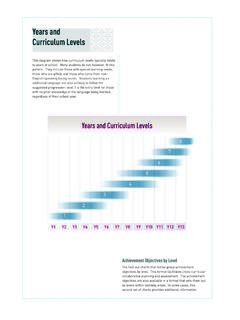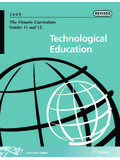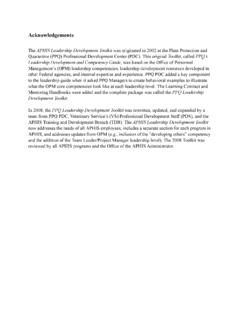Transcription of MATHEMATICS - TKI
1 I CS. A T. E M. A TH. M. M. U L U. C. R R I. C U. d a lan Ze w Ne the in Ministry of Education Learning Media Wellington First published 1992 by Learning Media, Ministry of Education, Box 3293, Wellington, New Zealand. Copyright Ministry of Education All rights reserved. Enquiries should be made to the publisher. ISBN 0 478 05806 3. Dewey number 510. Item number 92/418. Contents Foreword 5. Introduction 7. General Aims of MATHEMATICS Education 8. Achievement Aims of the MATHEMATICS Curriculum 9. Development of Essential Skills through MATHEMATICS 10. Approaches to Teaching and Learning in MATHEMATICS 11.
2 Problem-solving Approach 11. Catering for Individual Needs 12. Use of Resources 13. Assessment and Evaluation in MATHEMATICS 15. Format and Presentation of this Document 16. Strands 16. Achievement Objectives by Levels 16. Suggested Learning Experiences 17. Sample Assessment Activities 18. Development Band 19. Courses for Senior Secondary School 21. Mathematical Processes 23. Number 31. Number: Level 1 32. Number: Level 2 36. Number: Level 3 40. Number: Level 4 44. Number: Level 5 48. Number: Level 6 52. Measurement 57. Measurement: Level 1 58. Measurement: Level 2 62.
3 Measurement: Level 3 66. Measurement: Level 4 70. Measurement: Level 5 74. Measurement: Level 6 78. Measurement and Calculus: Level 7 82. Measurement and Calculus: Level 8 86. Geometry 91. Geometry: Level 1 92. Geometry: Level 2 96. Geometry: Level 3 100. Geometry: Level 4 104. Geometry: Level 5 110. Geometry: Level 6 116. Geometry: Level 7 120. Geometry: Level 8 124. Algebra 129. Algebra: Level 1 130. Algebra: Level 2 134. Algebra: Level 3 138. Algebra: Level 4 142. Algebra: Level 5 148. Algebra: Level 6 154. Algebra: Level 7 158. Algebra: Level 8 164. Statistics 169.
4 Statistics: Level 1 170. Statistics: Level 2 174. Statistics: Level 3 178. Statistics: Level 4 182. Statistics: Level 5 186. Statistics: Level 6 192. Statistics: Level 7 198. Statistics: Level 8 204. Glossary 210. 4. Foreword This curriculum statement replaces the syllabuses MATHEMATICS : Junior Classes to Standard 4 and MATHEMATICS : Forms 1 to 4. The statement specifies the MATHEMATICS learning area described in The New Zealand Curriculum Framework and provides the basis for MATHEMATICS programmes in schools from Year 1 to Year 13, that is, from Junior classes to Form 2 in primary schools and from Form 3 to Form 7 in secondary schools.
5 The Minister of Education initiated a redesign of the MATHEMATICS curriculum in 1991, as part of a broad initiative aimed at improving achievement levels in the essential subjects of the curriculum. The review and writing were undertaken by a small project team under the general guidance of a MATHEMATICS advisory committee. A draft statement was prepared and circulated to schools and interested groups for comment and discussion. The views of all those who responded have been taken into account in preparing the final curriculum statement. There are three major directions in this MATHEMATICS curriculum statement.
6 It gives special emphasis to continuity and progression in learning in MATHEMATICS by specifying clear learning goals expressed as achievement objectives at eight levels through all of the years of schooling. The statement focuses on the importance of diagnostic and formative assessment to enhance the teaching and learning process for all students. Finally, the curriculum statement stresses the need for MATHEMATICS to be taught and learned within the context of problems which are meaningful to students and which lead to understanding of the way MATHEMATICS is applied in the world beyond school.
7 The Ministry is grateful to all who have contributed to the development of this curriculum statement, especially the contractor and the writers, the contract review committee, and the members of the policy advisory group all of whom gave freely of their time and experience. Maris O'Rourke, PhD. Secretary for Education 5. 6. Introduction MATHEMATICS is a coherent, consistent, and growing body of concepts which makes use of specific language and skills to model, analyse, and interpret the world. MATHEMATICS provides a means of communication which is powerful, concise, and unambiguous.
8 As a human endeavour, MATHEMATICS involves creativity and imagination in the discovery of patterns of shape and number, the perceiving of relationships, the making of models, the interpretation of data, and the communication of emerging ideas and concepts. The New Zealand Curriculum Framework includes MATHEMATICS as one of seven essential areas of learning. Mathematical understanding and skills contribute to people's sense of self-worth and ability to control aspects of their lives. Everyone needs to develop mathematical concepts and skills to help them understand and play a responsible role in our democratic society.
9 MATHEMATICS education aims to provide students with those skills and understandings. The New Zealand Curriculum Framework also asserts the importance of eight essential sets of skills: communication skills; numeracy skills; information skills; problem-solving skills; self-management and competitive skills; social and co-operative skills; physical skills; work and study skills. The need for people to be numerate, that is, to be able to calculate, estimate, and use measuring instruments, has always been identified as a key outcome for education. MATHEMATICS education aims to contribute to the development of the broad range of numeracy skills.
10 In an increasingly technological age, the need for innovation, and problem-solving and decision-making skills, has been stressed in many reports on the necessary outcomes for education in New Zealand. MATHEMATICS education provides the opportunity for students to develop these skills, and encourages them to become innovative and flexible problem solvers. The ability to communicate findings and explanations, and the ability to work satisfactorily in team projects, have also been highlighted as important outcomes for education. MATHEMATICS education provides many opportunities for students to develop communication skills and to participate in collaborative problem-solving situations, thereby contributing to the development of many social and co-operative skills.







